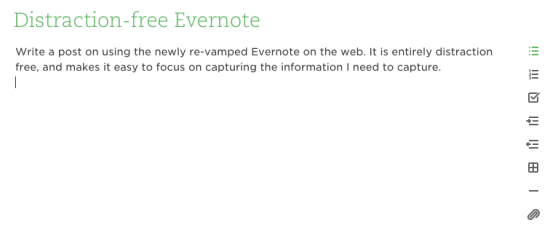Once a year, I’ve gotten into the habit of reviewing and updating my social media profiles. You know, what I say about yourself on Twitter, or Facebook, or LinkedIn, and what I send to publications when they request biographies.

I generally only do this once a year, and I use 3 tools to manage the process:
- Evernote, where I store my profiles from year-to-year.
- TextExpander, in which I keep my updates profiles for easy insertion into email messages and other documents.
- The Press Kit page on my blog, where I made the profiles available to anyone who requires them.
The annual review of my social media profiles
I know that there are people out there who change their social media profiles frequently, but I strive for consistency of message. I also like to keep my profiles professional for the most part. So I review them once a year and decide what updates, if any, need to be made.
My profiles are easy to maintain because I use only 4 variants:
1. 140 character Twitter-specific profile
This profile is what I use for Twitter, and for any social media platforms based on Twitter which limit the profile to roughly 140 characters or so.
2. 140 character profile
This is a variant of #1 above, and allows me to have a very short profile available for outlets who request it.
3. 50 word profile
This is a profile I use when I have a little more space. I used this profile frequently when I wrote guest posts and a bio is requested to accompany the post.
4. 100 word profile
This is a profile I use for places that request a little bit more information, or want a little more background.
By maintaining just these profiles, I assure that the message I send out into the world about myself is consistent across the board.
I review these profiles at the end of each year, and I do it at the end because it provides a convenient marker for looking back at any new or significant accomplishments within the year that I might want to include in the profile.
I have written before about how I use Evernote to track my achievements. This comes in handy in updating my profiles each year.
Updating my profiles in Evernote
I update my profiles in Evernote, and rather than overwrite the old note containing the profile, I create a new note with the new profile, one for each of the four listed above. This allows me to see the overall history of changes I’ve made to my profiles over time.
I create one note for each profile, work out the kinks there, and use Evernote’s built-in character and word counts to make sure I’m sticking close to the lengths of each profile.

Once I am satisfied with the updates I’ve made to my profile, I copy the updates and paste them into the appropriate social media platforms.
Updating my snippets in TextExpander
One big time-saver I’ve found is to have my profiles and bios available as snippets in TextExpander. This allows two things:
- I can access them quickly, to reply to an email, or insert them in a web page, without having to hunt them down.
- I maintain consistency by not having to reinvent them each time I am asked for a profile or bio.
I use simple abbreviations for my snippets so that I don’t have to stretch my memory to recall them. Here is what the snippet for my 140 character (Twitter) bio looks like:

Updating my Press Kit page on the blog
The last step in the review process is updating my Press Kit page. I maintain this page as a place where media outlets and others can go to for accurate bios and author photos when needed for a publication or interview.
The Press Kit contains the most up-to-date profiles and bios that I have. Granted, I often only update my bios once a year, but as I try to keep them simple, the changes tend to be small and subtle
Having the information centralized and managed from Evernote is convenient because it makes it easy to search, and to see changes over time. Having the snippets in TextExpander probably save me more time than I imagine throughout the course of the year, especially as I am asked for these things with increasing frequency. Having them on the Press Kit page makes for a convenient self-service model.
Most importantly, for me, is the fact that the profiles vary in length, but not in message. They are consistent with one another, and that helps to ensure that I am sending out a consistent message for all of my profiles.
If you have a suggestion for a future Going Paperless post, let me know. Send it to me at feedback [at] jamietoddrubin.com. As always, this post and all of my Going Paperless posts is also available on Pinterest.
Last week’s post: How I Use Evernote to Remind Me of Everything.
Enjoy these posts? – Tell a friend
Recommending readers is one of the highest compliments you can pay to a writer. If you enjoy what you read here, or you find the posts useful, tell a friend! Find me online here:
Twitter | Facebook | Google+ | Reddit | Blog | RSS
Or use one of the share buttons below. Thanks for reading!
Like this:
Like Loading...

















 RSS - Posts
RSS - Posts